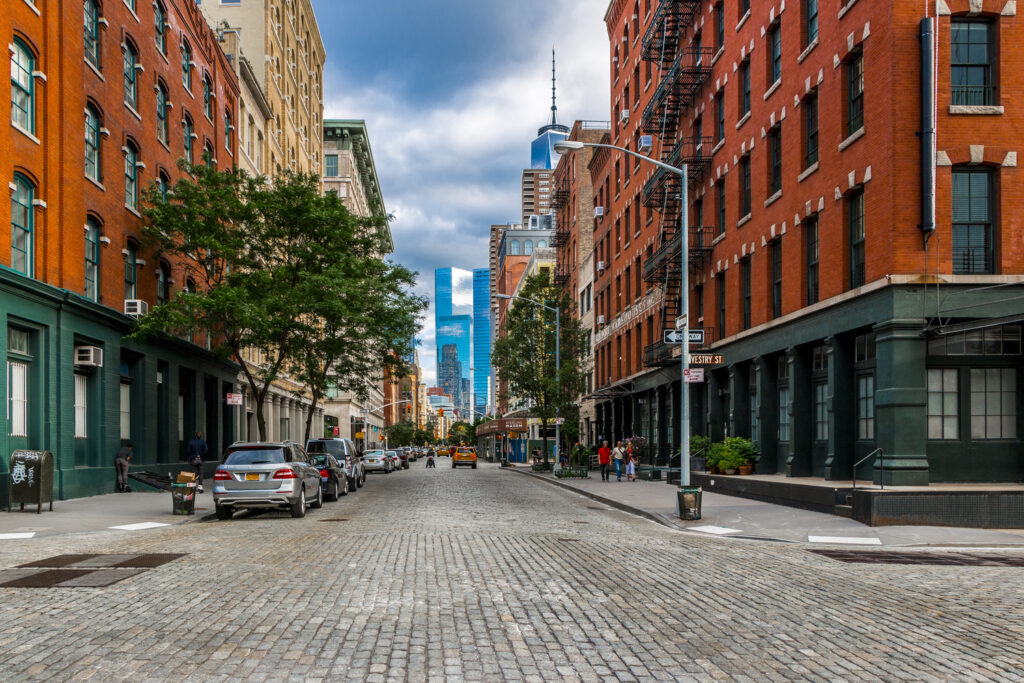
Integral to New York City’s housing market, TriBeCa offers a mix of pre-war buildings, converted lofts, and modern luxury developments. Historically, property values in the area have outpaced those of other Manhattan neighborhoods due to its prime location near the Financial District and its allure for celebrities, business figures, and professionals. Despite these fluctuations, TriBeCa remains highly sought after for its upscale living, vibrant urban lifestyle, unique architecture, and close proximity to Hudson River Park.
Analyzing Trends in TriBeCa Real Estate Market from the Previous Year
Taking a closer look at the trends in the TriBeCa real estate market from the previous year provides valuable insights into the current market conditions. In terms of median sale price, TriBeCa experienced an 8.0% decrease compared to the previous year. Despite this decline, TriBeCa remains an upscale neighborhood with high property values. Understanding the changes in median sale prices helps potential buyers and investors gauge the overall market and make informed decisions.
Price Per Square Foot
The price per square foot is an essential metric in the real estate market, providing a standardized measure of property value. In TriBeCa, the price per square foot is $2,025.
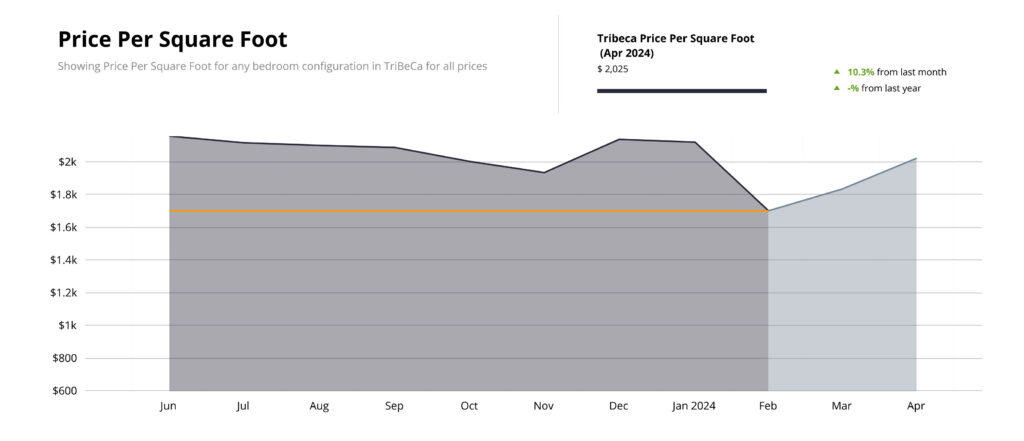
This suggests a potentially more favorable market for buyers, as they may be able to find better deals on properties in TriBeCa. However, it is essential to consider other factors such as location, amenities, and condition when evaluating the value of a property.
Liquidity Pace Chart
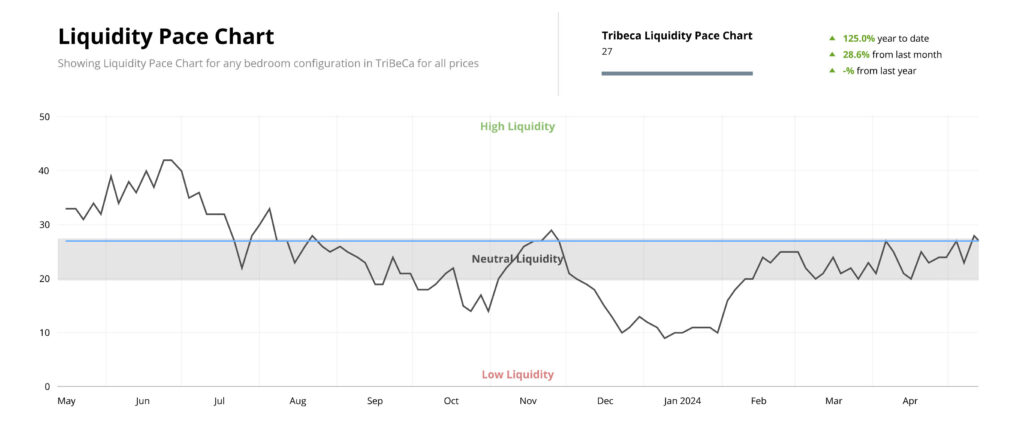
The liquidity pace in the TriBeCa real estate market can be analyzed by looking at the median sale and monthly closed sales data. In March 2024, there were 44 homes sold in TriBeCa, representing a 22.2% increase compared to the previous year.
Understanding the liquidity pace can provide insights into the market’s activity and the level of demand for homes in TriBeCa. An increase in closed sales indicates a more active market, potentially benefiting sellers who are looking to sell their properties quickly.
Market Pulse
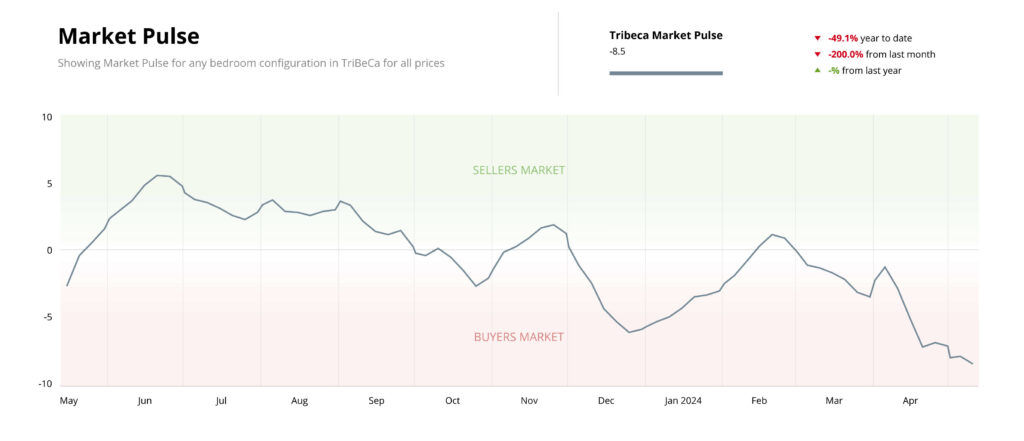
The market pulse in TriBeCa reflects the overall health and activity of the housing market. Currently, TriBeCa is considered a buyer’s market, with prices tending to be lower and homes staying on the market for longer.
Buyers in TriBeCa have more options to choose from and may have more negotiating power. However, sellers should be mindful of pricing their properties competitively to attract potential buyers. Understanding the market pulse can help buyers and sellers navigate the TriBeCa real estate market more effectively.
Days on Market
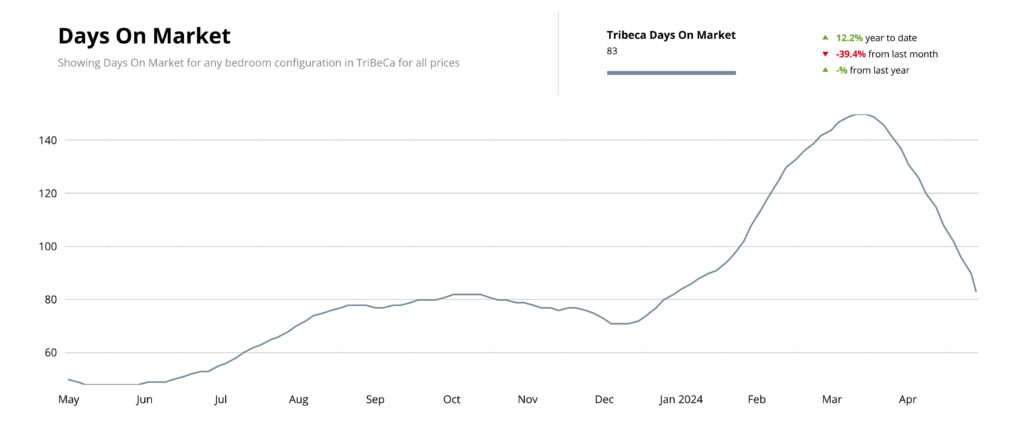
The average number of a property stays on the market, also known as days on market (DOM is an important indicator of market conditions. In TriBeCa, homes after an average of over 140 days on the market in March 2024 compared to 100 days the previous year.
Analyzing the days on market provide insights into the level of demand for homes in TriBeCa. longer DOM may indicate a slower market, while a shorter DOM suggests a more and competitive market. resilient despite external factors such as the global pandemic.
Monthly Closed Sales
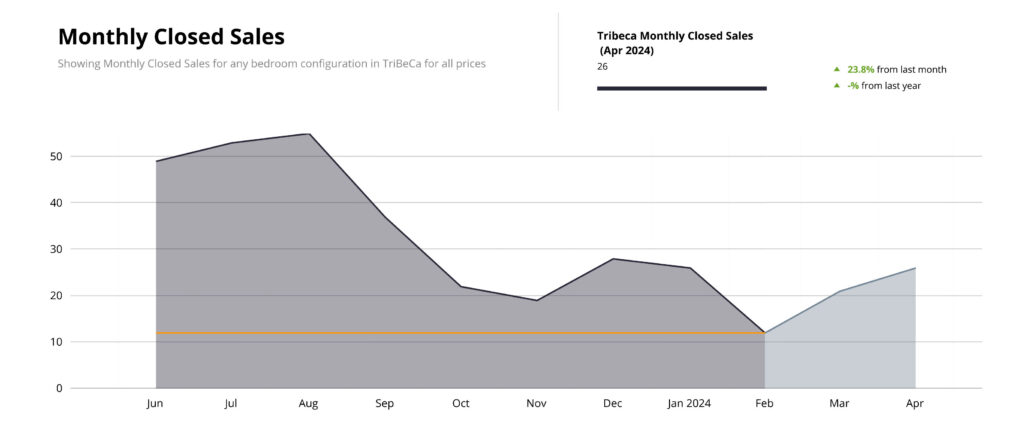
In the context of Tribeca real estate trends, analyzing the data on monthly closed sales provides valuable insights into market dynamics. Understanding the fluctuations in the number of properties sold each month helps gauge the overall activity and demand in the area. By tracking these figures over time, real estate professionals and investors can make informed decisions regarding buying and selling strategies within Tribeca. This data also reflects the level of consumer interest and confidence in the housing market, shaping future predictions and investment strategies.
Monthly Contract Activity
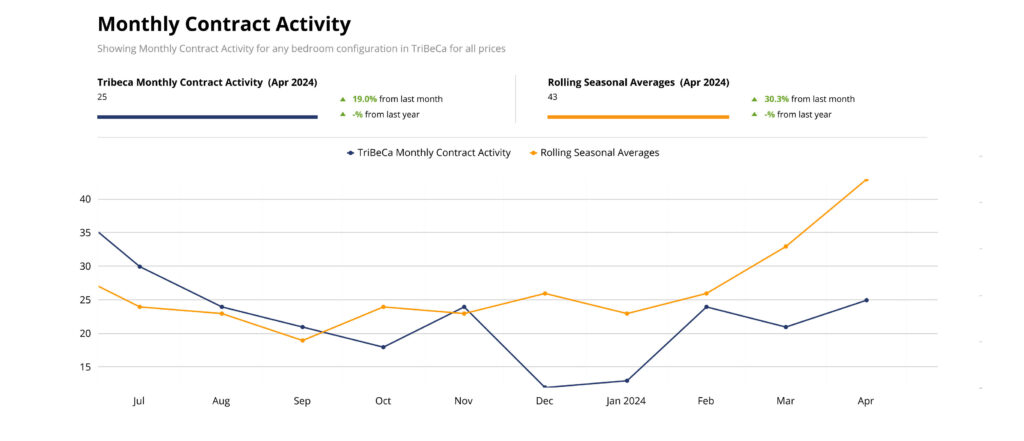
Analyzing the monthly contract activity in TriBeCa provides insights into the number of properties that are under contract and pending closing. In April 2024, there were 25 properties under contract in TriBeCa.
Studying the contract activity can help gauge the level of buyer interest in the market. A consistent number of contracts indicates a stable market with sustained demand.
Pending Sales
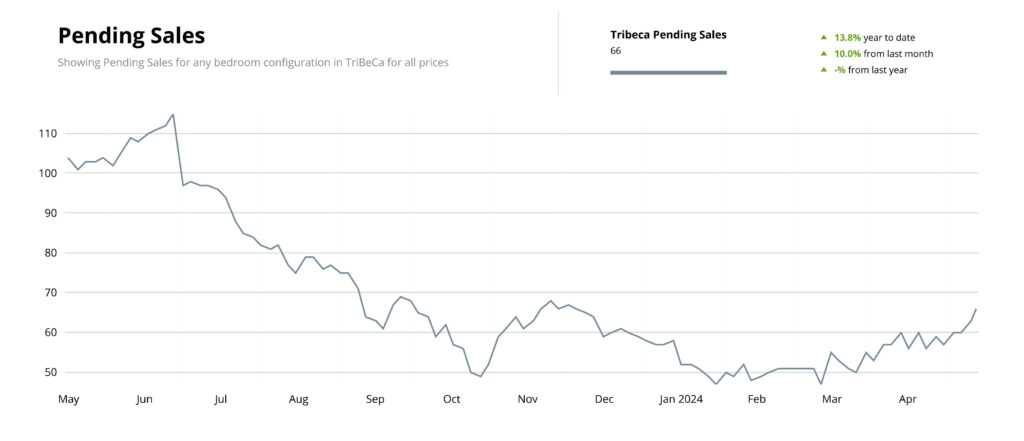
Pending sales refer to properties that are under contract but have not closed yet. Tracking pending sales provides insights into the future market activity and can help predict trends in the TriBeCa real estate market.
As of April 2024, there were 16 pending sales in TriBeCa, indicating a healthy level of buyer interest and a potentially active market in the near future.
Supply
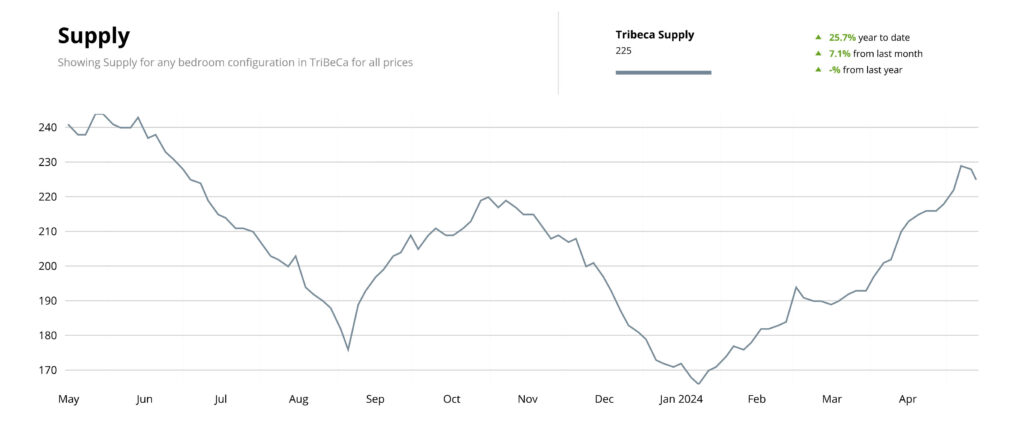
The supply of available homes in the TriBeCa real estate market is an essential factor to consider when analyzing market conditions. As of April 2024, there were 225 homes for sale in TriBeCa, representing a 7.1% increase compared to the previous month.
The increase in supply suggests a potentially more favorable market for buyers, as they have more options to choose from. However, sellers should be mindful of pricing their properties competitively to attract potential buyers.
Current Market Conditions in TriBeCa
The current real estate market in TriBeCa favors buyers, with lower prices and longer listing times.
Price Trends and Predictions
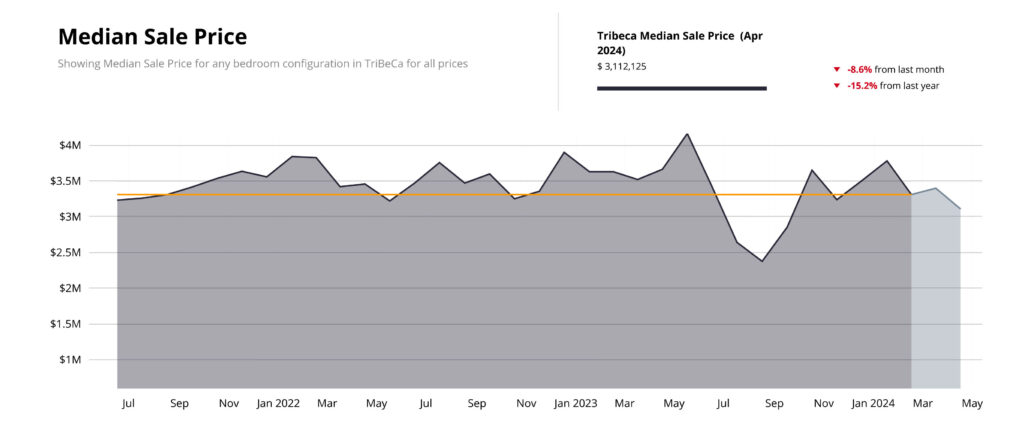
As of the most recent data available, the median sales price in Tribeca stands at $3,112,125. This figure represents a notable decrease of 15.2% from the previous year. Despite this decline, Tribeca remains an attractive destination for homebuyers and investors
While the median sales price in Tribeca has experienced a modest decrease over the past year, the neighborhood continues to embody prestige, sophistication, and urban allure.
The Appeal of TriBeCa for Homebuyers and Investors
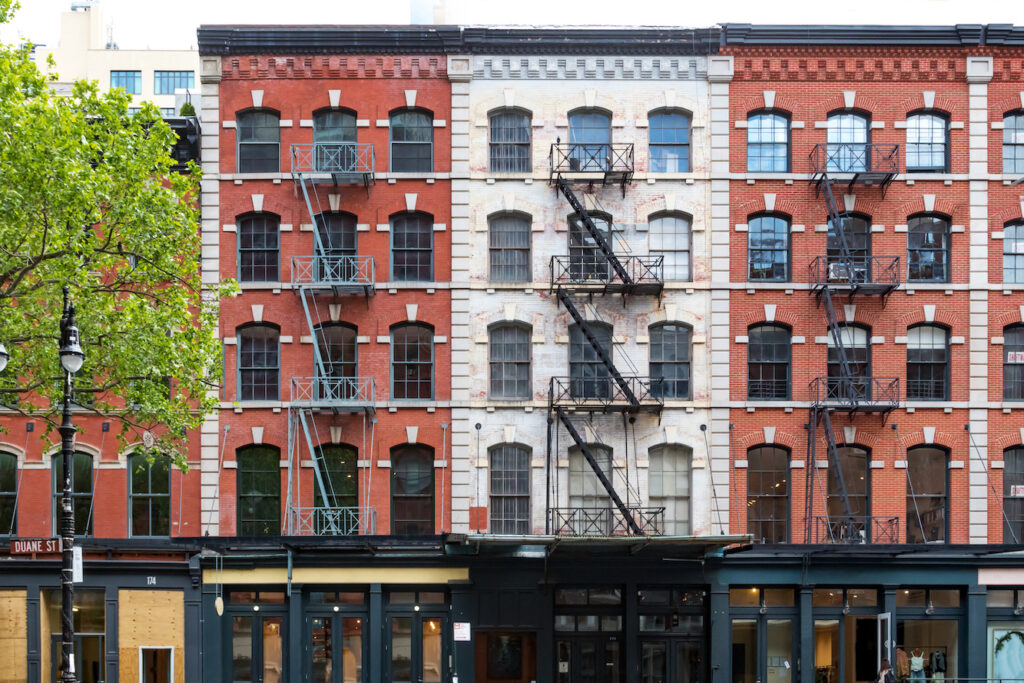
The attractiveness of TriBeCa’s real estate market appeals to both homebuyers and investors. It emphasizes the neighborhood’s unique mix of luxury living, trendy amenities, and vibrant cultural scene. TriBeCa’s proximity to downtown Manhattan, upscale properties, and renowned restaurants contribute to its appeal. Investors are particularly drawn to TriBeCa due to its high property values, consistent demand, ongoing development projects, and strong market fundamentals, making it a compelling long-term investment opportunity.
Comparison with Other Manhattan Neighborhoods
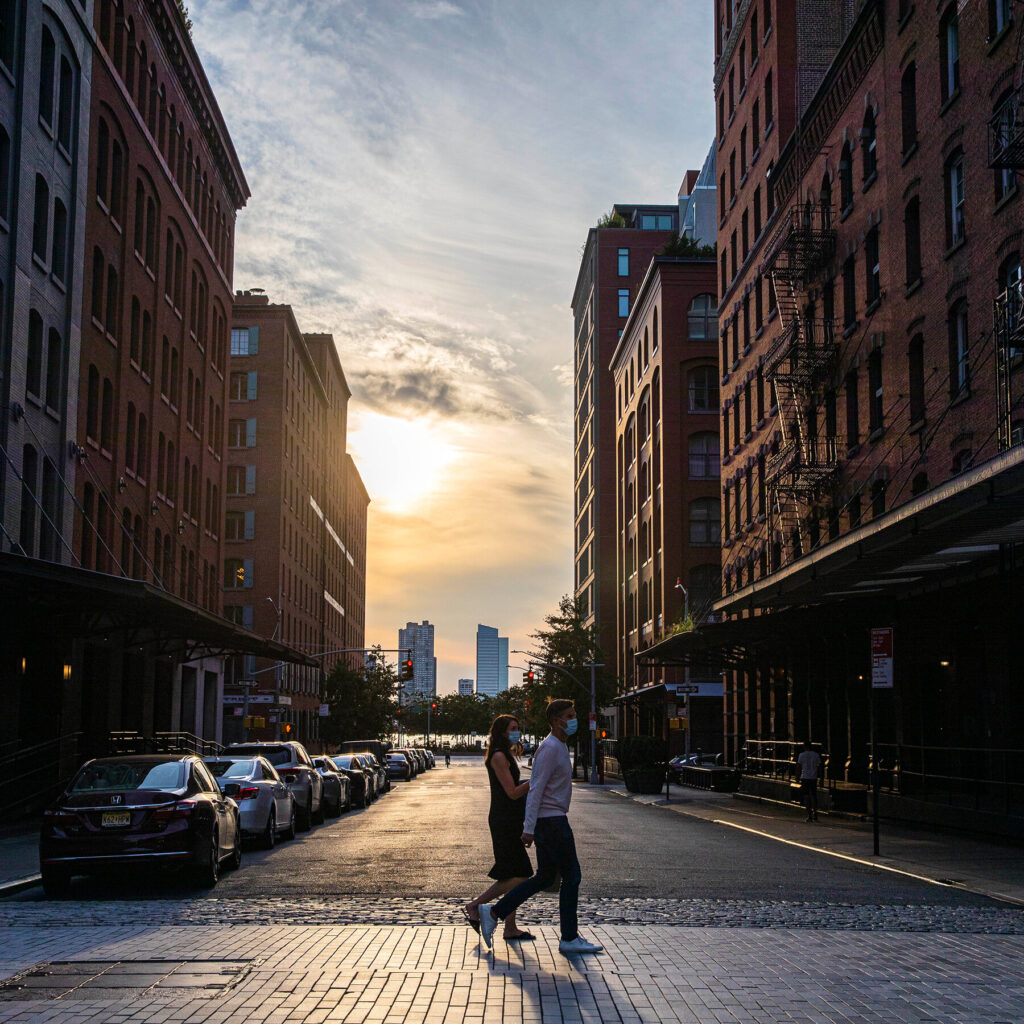
Manhattan’s neighborhoods each boast their own distinct character, with TriBeCa often entering discussions alongside the Upper East Side, Greenwich Village, and SoHo. The Upper East Side caters to affluent residents, showcasing upscale properties, high-end retail, and easy access to Central Park’s splendor. On the other hand, Greenwich Village exudes a bohemian vibe with its historic townhouses, diverse culinary scene, and rich artistic heritage, making it an attractive spot for those seeking a more unconventional lifestyle. SoHo, with its art galleries, chic boutiques, and youthful energy, remains a magnet for creative souls drawn to its vibrant ambiance and trendy offerings.
However, TriBeCa stands out for its fusion of luxury living, downtown charm, and proximity to the Hudson River. Its allure lies in its upscale residential options, trendy eateries, and waterfront views, attracting a diverse array of residents. While the Upper East Side appeals to those craving elegance and Greenwich Village to the creatively inclined, TriBeCa’s blend of sophistication and downtown energy caters to a broader spectrum of tastes and lifestyles. Its position as a nexus of luxury and urban vitality makes it a compelling choice for discerning buyers and investors seeking the quintessential Manhattan experience.
Ultimately, choosing among these neighborhoods hinges on individual preferences, lifestyle considerations, and budgetary constraints. Whether one prioritizes elegance, artistic expression, or a mix of luxury and downtown vibrancy, each neighborhood offers a unique slice of Manhattan living. As such, prospective residents and investors are encouraged to carefully weigh their priorities when selecting the ideal locale in the city that never sleeps.
Key Factors Driving the Real Estate Market in TriBeCa
The TriBeCa real estate market is influenced by several key factors. Economic indicators, including employment rates, income levels, and overall city economic growth, are significant determinants of property values and market conditions. Moreover, the quality of public schools in the area plays a crucial role, as TriBeCa boasts some of the best schools in New York City, attracting families seeking quality education. Additionally, the broader housing market trends in Manhattan, such as supply and demand dynamics, interest rates, and buyer preferences, impact property values and sales pace in TriBeCa, making it important to monitor these trends for potential investments or purchases.
Cultural and Social Attractions
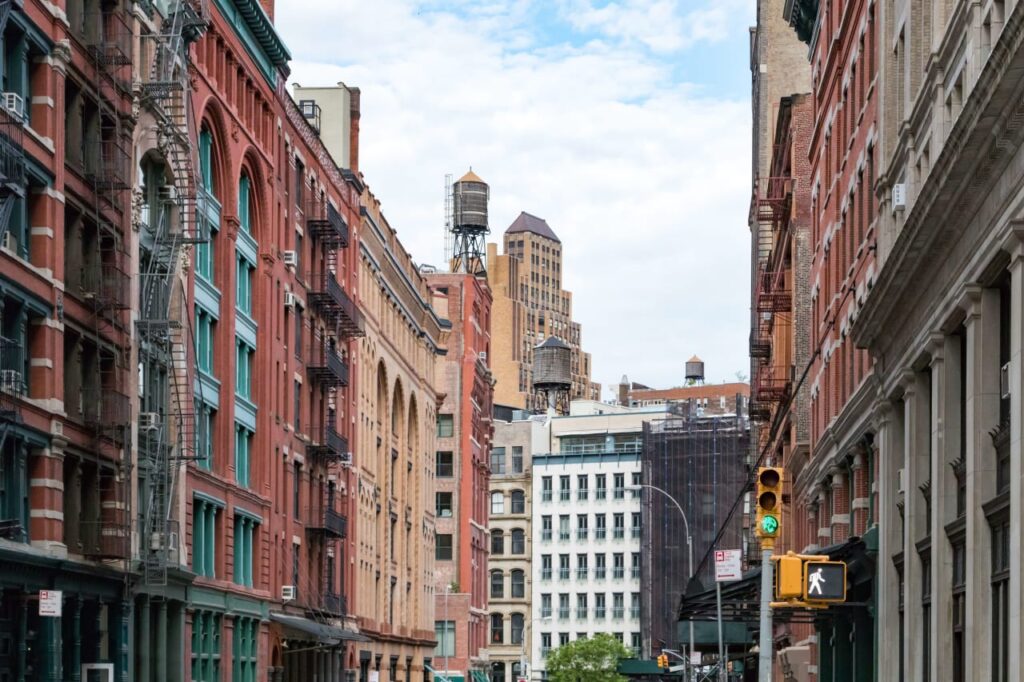
TriBeCa is a sought-after neighborhood in New York City, renowned for its cultural and social attractions. It hosts art galleries showcasing renowned artists and the annual Tribeca Film Festival. The area boasts trendy restaurants offering diverse cuisines, contributing to its vibrant culinary scene. TriBeCa’s social scene extends to its tree-lined streets, boutique shops, and outdoor spaces like Hudson River Park. These factors drive high property values, making it a desirable location for residents and investors alike. Understanding market trends and key factors can help navigate TriBeCa’s real estate market successfully.



0 Comments